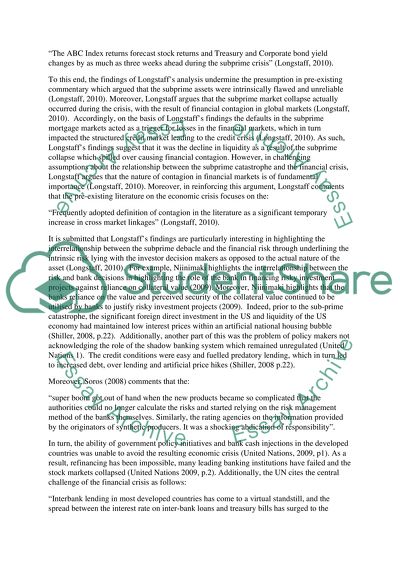Cite this document
(“Evaluate the reasons for the recent global financial crisis. ( Banking Essay”, n.d.)
Retrieved from https://studentshare.org/environmental-studies/1412724-evaluate-the-reasons-for-the-recent-global
Retrieved from https://studentshare.org/environmental-studies/1412724-evaluate-the-reasons-for-the-recent-global
(Evaluate the Reasons for the Recent Global Financial Crisis. ( Banking Essay)
https://studentshare.org/environmental-studies/1412724-evaluate-the-reasons-for-the-recent-global.
https://studentshare.org/environmental-studies/1412724-evaluate-the-reasons-for-the-recent-global.
“Evaluate the Reasons for the Recent Global Financial Crisis. ( Banking Essay”, n.d. https://studentshare.org/environmental-studies/1412724-evaluate-the-reasons-for-the-recent-global.


